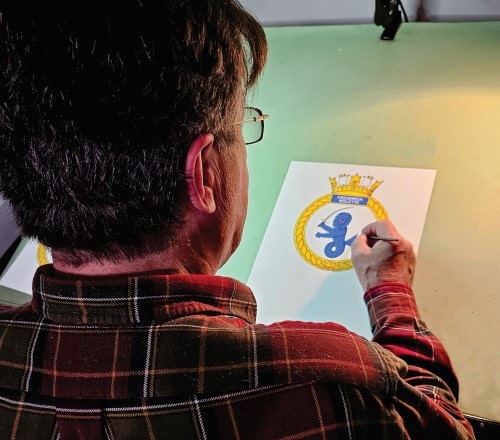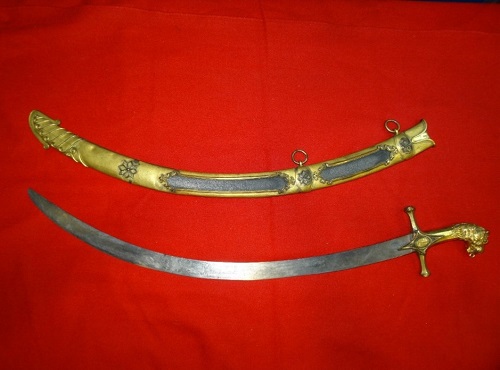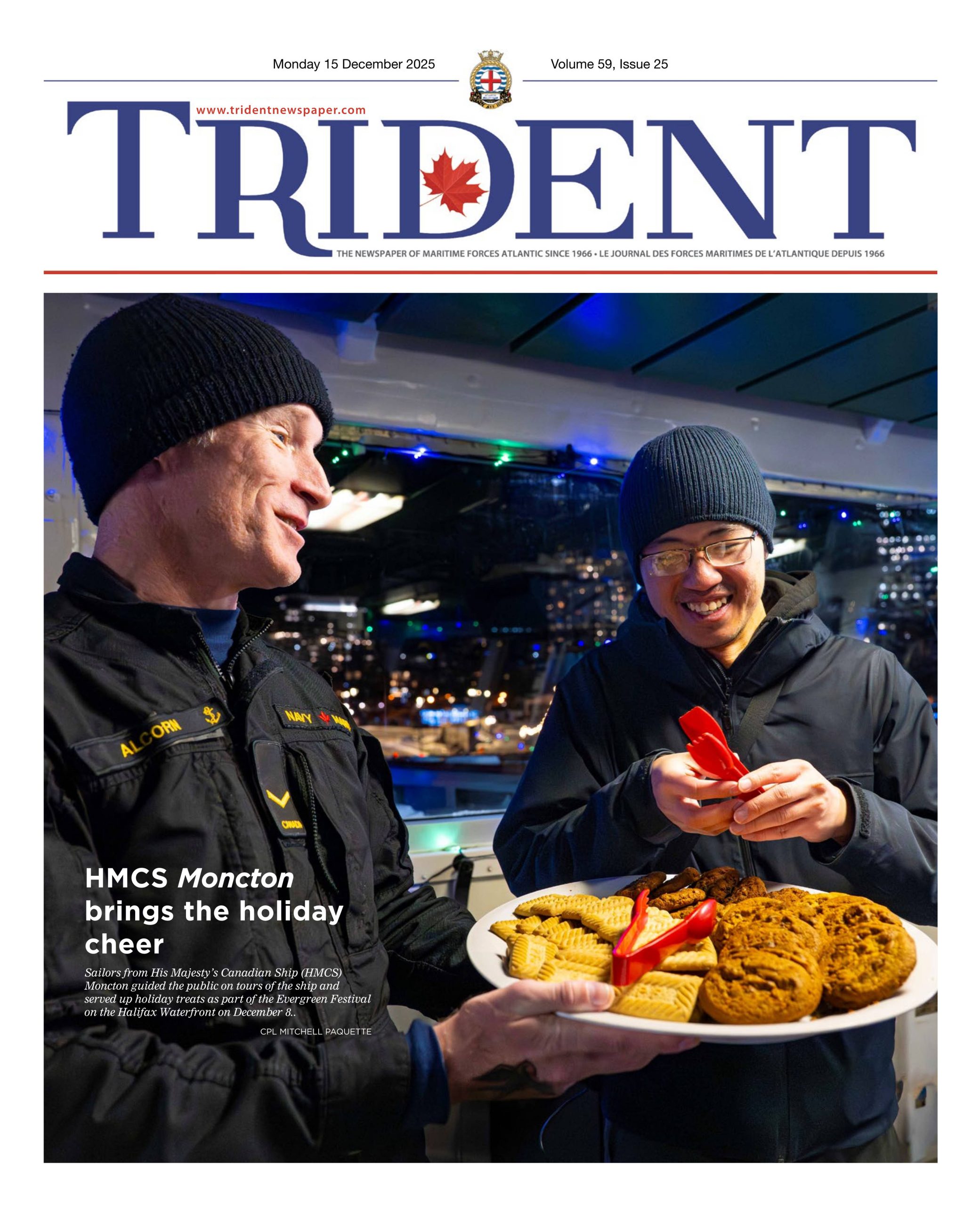
BRENDA GREY
‘With the Courage of a Lion’: HMCS Frédérick Rolette’s new badge
By RCN
A lot of research – and artwork – is behind each official badge created for the Canadian Armed Forces (CAF).
The latest one, for HMCS Frédérick Rolette (Canada’s fifth Arctic Offshore Patrol Ship (AOPS)), was recently finished at the Canadian Heraldic Authority (CHA) and includes a variety of elements inspired by Canadian military heritage.
“Heraldry relies on imagination and even imaginary creatures to convey complex histories and abstract concepts,” explains Bruce Patterson, Deputy Chief Herald of Canada.

NAVAL MUSEUM OF QUÉBEC
“For HMCS Frédérick Rolette, the personal characteristics, background, and fame of its namesake are embodied by the simple image of a heraldic sea-lion holding a sabre” he continues.
Born in Québec City on 23 September 1785, Frédérick Rolette is characterized as a bold, tenacious, and courageous French-Canadian sailor according to historical dispatches. These descriptions inspired the badge in profound ways, including the heraldic sea-lion and sabre.
Rolette’s actual sabre is presently on display at the Naval Museum of Quebec in Québec City.
“The sabre was given to Lieutenant Frédérick Rolette by the Provincial Navy in 1815 for his exploits and bravery during the War of 1812,” explains Samuel Venière, Historian and Project Manager at the Naval Museum of Québec.
“Shortly after the war, a group of friends and other citizens raised a sum of 50 guineas [a currency used by British colonies in North America at the time] to give him this particular sabre, whose fine steel blade is richly decorated with mythological figures and whose sheath is made of gilded copper inlaid with crocodile skins,” he adds.
A creative, collaborative process
A primary badge begins with a request from the Directorate of History and Heritage (DHH) to the CHA, which is responsible for heraldry in Canada and is part of the Governor General’s Office. The project is then assigned to a herald who works with the military unit to create a design concept. Designing the badge (often referred to in the Navy as a ‘crest’) for HMCS Frédérick Rolette began in March 2023 and involved significant research, including consultations with the Royal Canadian Navy and descendants of Frédérick Rolette.
A trained heraldic artist, in heraldic tradition that continues to this day, paints the badge by hand. Final touches are made, such as lettering, by a calligrapher.
Each badge has a complementary description, known as a blazon, that explains symbolism using heraldic language. Upon completion, each badge is reviewed by the Chief Herald (CHA) and Inspector of CAF Colours and Badges (at DHH) before it is presented for official approval by the Governor General.
The previous AOPS badge, for HMCS William Hall, was completed last summer and features a cannon. The ship’s namesake is historic; William Hall was the first Nova Scotian to receive a Victoria Cross and this is the first time in Canada’s history that a warship is named in honour of a person of African descent.
The badge for Canada’s sixth AOPS, HMCS Robert Hampton Gray, is next. It is in the final stages of production and will be unveiled soon.






